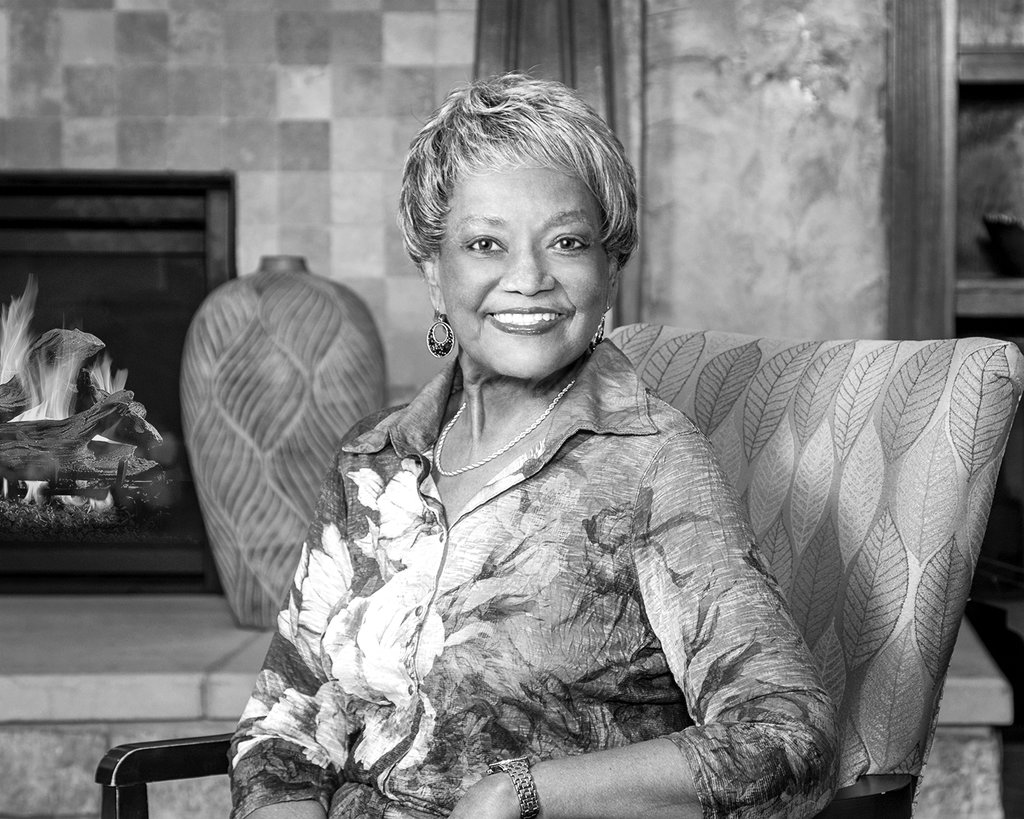
During World War II, when Raye Montague was 7 and growing up in Arkansas, her grandfather took her to see a traveling exhibit of a German submarine that had been captured off the coast of South Carolina. She was enchanted.
“I looked through the periscope and saw all these dials and mechanisms,” she recalled years later. “And I said to the guy, ‘What do you have to know to do this?’ ”
His response: “Oh, you’d have to be an engineer, but you don’t have to worry about that.”
The clear implication was that as a black girl she could never become an engineer, let alone have anything to do with such a vessel.
She would go on to prove him very wrong.
The girl who faced racism and sexism in the segregated South, where she rode in the back of the bus and was denied entry to a college engineering program because she was black, became an internationally registered professional engineer and shattered the glass ceiling at the Navy when she became the first female program manager of ships. She earned the civilian equivalent of the rank of captain.
In a breakthrough achievement, she also revolutionized the way the Navy designed ships and submarines using a computer program she developed in the early 1970s.
It would have normally taken two years to produce a rough design of a ship on paper, but during the heat of the Vietnam
At the height of her career, she was briefing the Joint Chiefs of Staff every month and teaching at the United States Naval Academy in Annapolis, Md. Many of her ship designs are still in use.
Ms. Montague shattered the glass ceiling at the Navy when she became the first female program manager of ships.CreditMontague Family Archive

Ms. Montague was one of a number of black women who, starting in the 1930s, performed invaluable, highly technical work for the United States government but who, working behind the scenes, were invisible to the public — and often to their colleagues.
She died of congestive heart failure on Oct. 10 at a hospital in Little Rock, Ark., her son, David R. Montague, said. She was 83.
Although she was decorated by the Navy, Ms. Montague, who retired from the service in 1990, was not acknowledged publicly until 2012, when The Arkansas Democrat-Gazette wrote an in-depth profile of her.
She was not recognized nationally until the publication in 2016 of “Hidden Figures,” Margot Lee Shetterly’s best-selling account of the black female mathematicians at NASA who facilitated some of the nation’s greatest achievements in space. Their acclaim was amplified later that year when the book became an Oscar-nominated movie.
The Navy honored Ms. Montague as its own “hidden figure” in 2017. She was inducted into the Arkansas Women’s Hall of Fame this year.
Like her counterparts in the space program, Ms. Montague faced enormous obstacles — or what she called challenges, since she believed she could always find ways to work around anything that stood in her way.
She grew up in Arkansas in the racially fraught 1950s, when Rosa Parks refused to give up her seat on a bus to a white man in Montgomery, Ala., and Gov. Orval E. Faubus of Arkansas called up the National Guard to bar nine black students from the all-white Little Rock Central High School.
But Ms. Montague had a certain confidence about herself, she said, instilled by her mother, who raised her alone.Notable Deaths 2018: Science and TechnologyA memorial to those who lost their lives in 2018Aug. 3, 2018
“You’ll have three strikes against you,” her mother, Flossie (Graves) Jordan, told her, Ms. Montague recalled last year in an interview on the ABC program “Good Morning America.” “You’re female, you’re black and you’ll have a Southern segregated school education. But you can be or do anything you want, provided you’re educated.”
Raye Jean Jordan was born in Little Rock on Jan. 21, 1935. Her father, Rayford Jordan, was not in the picture for long, and her mother raised her on her income from a cosmetology business. Ms. Montague graduated from Merrill High School in Pine Bluff, Ark., in 1952.
A bright student who loved science and math, she wanted to study engineering at the University of Arkansas in Fayetteville. But because Arkansas colleges would not award such degrees to African-Americans in those days, she attended Arkansas Agricultural, Mechanical & Normal College (now the University of Arkansas at Pine Bluff). She graduated in 1956 with a degree in business.
Still determined to become an engineer, she headed to Washington and secured a job with the Navy as a clerk-typist. She worked her way up, becoming a digital computer systems operator and a computer systems analyst in a male-dominated field.
“I worked with guys who had graduated from Yale and Harvard with engineering degrees and people who had worked on the Manhattan Project developing the atom bomb,” Ms. Montague told The Democrat-Gazette.
She took computer programming at night school and after a year asked for a promotion.
Her boss, by her account, told her that if she wanted a promotion, she would have to work nights. That was tough for her. There was no public transportation at night, and she didn’t have a car. In fact, she didn’t know how to drive.
But she went out and bought a 1949 Pontiac for $375 and had the salesman drive it to her house. She then taught herself to drive, leaving her house at 10 o’clock at night and creeping along the roads until arriving at work for the midnight shift. She got the promotion and returned to working days.
The project that would be her signal achievement seemed to be an impossible task when it was assigned — to lay out, step by step, how a Naval ship might be designed using a computer. That had never been done before.
Ms. Montague receiving a plaque in 2017 from representatives of the Naval Surface Warfare Center. She was publicly and nationally recognized only later in life.CreditAB Forces News Collection/Alamy

Her boss (who didn’t like her, she said) gave her six months to complete the project, not telling her that his department had been trying to do it for years without success.
Ms. Montague learned the computer system on her own and then told her boss that to install her program she would have to tear down the Navy’s computer and rebuild it. And that would mean working at night, she said.
He told her she could work nights only if she had someone else with her, and then made it clear that he wouldn’t pay any of her colleagues overtime. She thought that his demand was frivolous and that he intended her to fail.
Not to be deterred, Ms. Montague brought along her mother and her 3-year-old son. Finally impressed by her determination, her boss gave her extra staff. She met the deadline and presented him with her computer-generated designs for a ship.
President Richard M. Nixon, who wanted the Navy to be able to produce ships at a faster pace, heard about her accomplishment and sent word for her to design a rough draft of an actual ship. They gave her all the staff she needed and an unlimited budget, her son said. It led to her designing the first Navy ship with a computer program, in less than 19 hours.
For that feat she received the Navy’s Meritorious Civilian Service Award in 1972. The Navy began using her system to design all its ships and submarines. Her achievement put her on the map, and she began advising other government agencies and the private sector, including the automobile industry. Her last Navy project was the nuclear-powered Seawolf submarine.
Along the way she was married three times, to Weldon A. Means in 1955, to David H. Montague in 1965 and to James Parrott in 1973. She had her only child, David, with Mr. Montague, who has since died. When her third marriage ended, she returned to using the name Montague. In addition to her son, she is survived by a granddaughter.
After she retired, Ms. Montague moved back to Little Rock to be near her family. There she took part in civic organizations; mentored young people, including prison inmates; organized clothing drives; gave motivational talks; and played bridge.
“She was busy opening doors for people and inspiring them,” her son said. “Her message was always the same: ‘Don’t let people put obstacles in front of you, but understand you also have to put in the work.’ She didn’t have any patience for people who weren’t willing to go the extra mile.”








